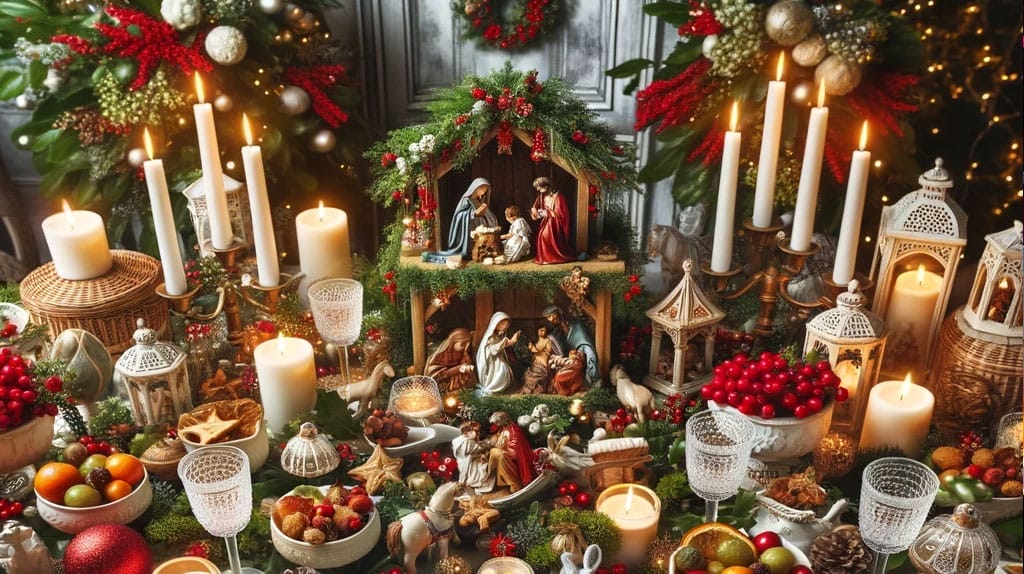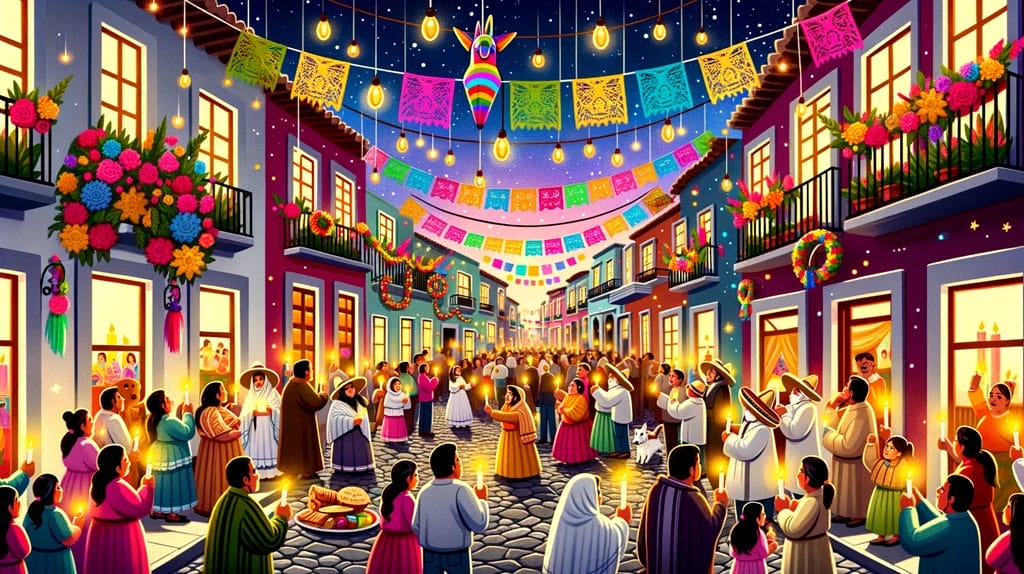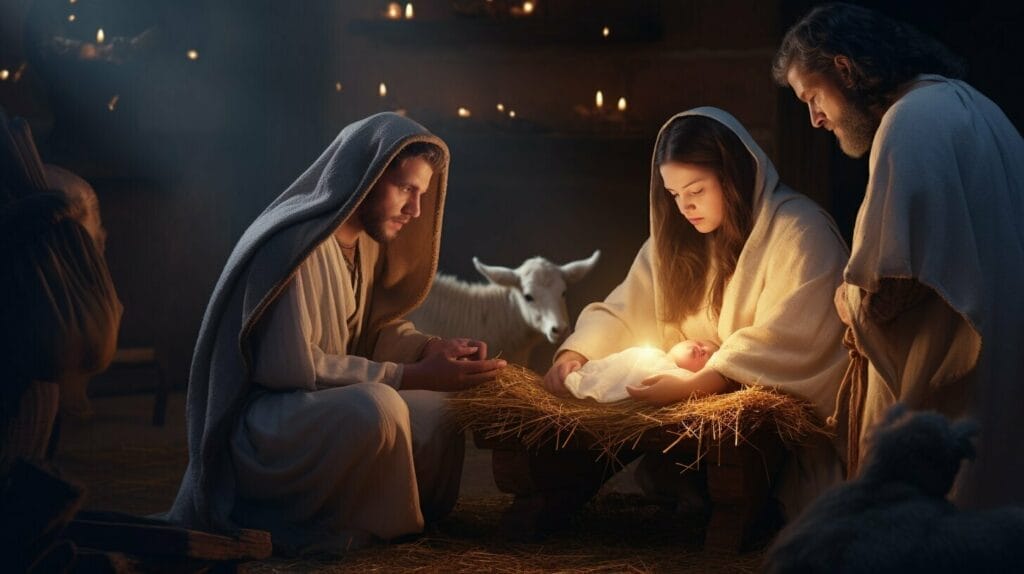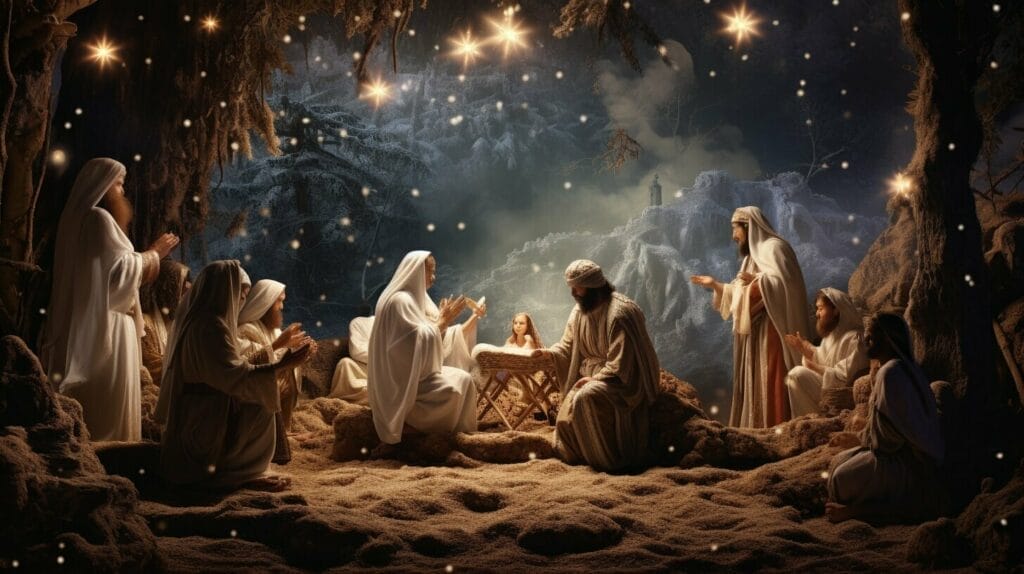What is Christmastide and The Twelve Days of Christmas
Christmastide, also commonly known as the Christmas season, is a term deeply entrenched in Christian traditions, symbolizing a significant period in the liturgical calendar. The word itself is a blend of “Christmas” and the Old English term “tīd,” which means “time” or “season.”

Its origins trace back to early Christian practices, where the faithful marked this time to celebrate the birth of Jesus Christ. Over centuries, the word has evolved, yet its essence remains a reflection of the joy, hope, and solemnity associated with the Nativity of Jesus.
Key Takeaways
- Christmastide is a period of celebration that lasts for twelve days, beginning on Christmas Day and culminating on January 6th with the Feast of the Epiphany.
- The Twelve Days of Christmas are symbolic of the time between the birth of Jesus and the arrival of the Three Wise Men, or Magi.
- Christmastide is a distinct liturgical season that follows Advent, which is a time of preparation for the coming of Christ.
Twelve Days of Christmas
The reference to the “Twelve Days of Christmas” within Christmastide holds profound religious significance within the Christmas calendar. These twelve days commence on Christmas Day, December 25th, and culminate on the Feast of the Epiphany on January 6th. This period is not merely a sequential count of days but represents a continuous celebration of the mysteries of Christ’s birth and his early manifestations to humanity.
The popular carol “The Twelve Days of Christmas,” while festive in tone, is believed by some to have hidden meanings that correspond to Christian teachings. Each gift in the song, from the partridge to the drummers, is thought to symbolize a particular tenet or story from the Bible, intertwining merriment and doctrine in a melodic dance of faith.
Christmastide in Different Cultures
Christmastide, while rooted in Christian theology, has transcended its religious origins to become a global phenomenon, celebrated in myriad ways across diverse cultures and regions.
In the icy realms of Scandinavia, the season is marked by the “Jul” (Yule) festivities, where homes are warmed by the Yule log’s glow, and ancient Norse traditions intermingle with Christian beliefs.
Meanwhile, in the Philippines, the world’s longest Christmas season unfolds, commencing as early as September. Here, the “Simbang Gabi” or dawn masses become a spiritual journey, culminating in vibrant processions, colorful lanterns, and the sweet aroma of traditional rice cakes and delicacies.
In Mexico, “Las Posadas” reenacts Mary and Joseph’s search for a place to stay, with participants going from house to house, singing carols, and seeking shelter, culminating in festive gatherings and piñatas.

Over in Eastern Europe, countries like Ukraine celebrate Christmastide with a rich blend of Orthodox Christian rituals and pre-Christian Slavic traditions. The “Sviata Vecheria” or Holy Supper consists of twelve traditional dishes, each symbolizing one of Jesus’s apostles.
Meanwhile, Ethiopia, one of the world’s oldest Christian nations, celebrates Christmas on January 7th due to the Julian calendar. The day, known as “Ganna,” sees worshippers dressed in white, partaking in hours-long church services, and playing traditional games.
From the Southern Hemisphere’s sun-drenched Christmases in Australia, where beach barbecues and cricket matches are common, to the lantern-lit streets of China’s big cities during “Shèngdàn Jié” (Christmas Season), the spirit of Christmastide manifests uniquely, yet universally.
Each culture, while honoring the essence of Christ’s birth, adds its own melodies, flavors, and traditions to the global chorus of Christmastide celebrations, illustrating the season’s unparalleled ability to unite people across boundaries.
Duration and Liturgy of Christmastide
Christmastide is a season of joy and celebration that lasts for twelve days, starting on December 25th (Christmas Day) and ending on January 5th (the eve of Epiphany). The liturgy (prescribed forms and rituals used in public worship) of Christmastide is characterized by a spirit of festivity, with special emphasis on the birth of Jesus Christ and the joy it brings to the world.
During Christmastide, the color used in the Western Church is white or gold, symbolizing the purity and glory of Christ. The Eastern Church, on the other hand, uses a variety of colors, including white, gold, and blue.
Feast days during Christmastide include:
| Date | Feast Day |
|---|---|
| December 26 | St. Stephen’s Day |
| December 27 | St. John the Evangelist’s Day |
| December 28 | The Holy Innocents |
| December 31 | New Year’s Eve (Watch Night) |
| January 1 | Mary, Mother of God |
| January 6 | Epiphany |
During Christmastide, special religious practices are also observed, such as the singing of the Gloria in excelsis Deo (Glory to God in the highest) and the Te Deum, a hymn of thanksgiving. Other customs include the lighting of a Christ Candle, the decoration of churches and homes with evergreens and poinsettias, and the reading of passages from the Bible that tell the story of Christ’s birth.
In the Eastern Church, Christmastide includes the celebration of the Nativity of Christ on December 25th, followed by the feast of St. Stephen on December 27th, and the feast of St. John the Evangelist on December 28th. The period between Christmas and Epiphany is known as the “Twelve Days of Christmas” and is marked by special liturgical practices and customs.

Biblical Basis and Scriptural References of Christmastide
Christmastide has its roots in the Bible and is closely tied to the birth of Jesus Christ. The season begins on Christmas Day and continues for twelve days, ending on the Feast of the Epiphany, which commemorates the visit of the Magi to the infant Jesus.
The Gospel of Luke provides a detailed account of the nativity, including the angel’s announcement to the shepherds and the manger scene in Bethlehem. The Gospel of Matthew adds the story of the Magi and King Herod’s attempts to kill the baby Jesus. Both of these passages form the basis for many of the traditions and practices associated with Christmastide.
In addition to these specific accounts, many of the themes and messages of the Christmas story are woven throughout the Bible. The prophet Isaiah foretold the coming of a Messiah who would bring peace and salvation to the world, and the Gospel of John identifies Jesus as the Word made flesh, sent to dwell among us.

As Christians celebrate Christmastide, they remember the miracle of the Incarnation, the mystery of God becoming human, and the hope that Jesus brings to the world. The season is a time of reflection, gratitude, and joy, as believers contemplate the profound love of God expressed through the gift of his Son.
Incorporating scriptural references and themes into the celebration of Christmastide is a way for Christians to deepen their faith and connect with the spiritual significance of the season. From the lighting of Advent candles to the singing of traditional hymns, many practices and traditions associated with Christmastide are rooted in the Bible and serve as a reminder of the enduring power and relevance of the Christmas story.
The “Twelve Days of Christmas” Song
Melody, Mystery, and Meaning
“The Twelve Days of Christmas” is an iconic festive carol, echoing the celebratory spirit of Christmastide. At its core, the song enumerates a series of increasingly grand gifts given on each of the twelve days following Christmas, which traditionally represents the Twelve Days of Christmastide, culminating in the Feast of the Epiphany on January 6th. This period, rich in religious significance, reflects the continuous celebration of the mysteries surrounding Christ’s birth and his early manifestations to humanity.
While the song is popularly recognized for its catchy refrain and seemingly whimsical gifts, many believe that its lyrics carry deeper, coded religious meanings, especially during times when practicing Catholicism was forbidden.
Each gift in the carol is thought to symbolize a particular tenet or story from the Christian faith. For instance, the “partridge in a pear tree” is believed to represent Jesus Christ. The “two turtle doves” symbolize the Old and New Testaments, while the “three French hens” stand for the theological virtues of faith, hope, and love.

As the song progresses, the gifts continue to unfold layers of Christian teachings, from the “four calling birds” representing the four Gospels to the “twelve drummers drumming” symbolizing the twelve points of the Apostles’ Creed.
Over the years, “The Twelve Days of Christmas” has become an integral part of global Christmas celebrations, sung in homes, schools, and gatherings. Beyond its surface-level merriment, the song serves as a melodic reminder of the profound stories and teachings of Christmastide, weaving together joyous festivity with the deeper essence of the Christmas narrative.
Christmastide Practices and Traditions
During Christmastide, people engage in a variety of practices and traditions that add to the festive spirit of the season. From decorating homes to gift-giving, these customs are an essential part of the Christmastide experience.
Decking the Halls
One of the most beloved Christmastide traditions is decorating your home for the holidays. This can include putting up lights, hanging stockings, and adorning a Christmas tree with ornaments and garlands. Traditionally, the decorations stay up until January 6th, the Epiphany.

Gift-Giving
Another cherished Christmastide tradition is gift-giving. It is common to exchange presents with family, friends, and loved ones during this time. Many people also participate in charitable giving, donating to those in need during the holiday season.
Carol Singing
Carol singing is a popular Christmastide custom where groups of people go door-to-door singing traditional Christmas carols. This practice is especially popular in the United Kingdom and helps to spread holiday cheer throughout the community.
Attending Church Services
Attending church services is an essential part of Christmastide for many Christians. It is common to attend a candlelight service on Christmas Eve or a special mass on Christmas Day to celebrate the birth of Jesus Christ.
Feasting and Celebrations
Feasting and celebrations are a hallmark of Christmastide, with many people indulging in traditional holiday foods such as roasted ham, mince pies, and fruitcake. Many cultures also host parties and festivities during the holiday season, including the popular New Year’s Eve celebrations.
These Christmastide practices and traditions help to create a joyous atmosphere during the holiday season, bringing people together to celebrate and share in the spirit of the season.
Saints and Christmastide
Christmastide is a season deeply rooted in Christian tradition, and it is no surprise that many saints hold a special place during this time. Saints are revered figures who have dedicated their lives to serving God and humanity. They embody the values of faith, hope, love, and selflessness that are at the heart of the Christmas message.
One of the most well-known saints associated with Christmastide is St. Nicholas, a fourth-century bishop from Myra in present-day Turkey. St. Nicholas is the patron saint of children, and his generosity and kindness served as the inspiration for the modern-day figure of Santa Claus. Many different countries and cultures have their own unique versions of St. Nicholas, each with their own special customs and traditions.
Another saint associated with Christmastide is St. Stephen, who is celebrated on December 26th (Boxing Day), the second day of Christmas. St. Stephen was an early Christian disciple who was stoned to death for his faith. He is remembered for his courage and steadfastness in the face of persecution, and his story serves as a reminder of the sacrifices that many Christians have made throughout history.
St. Francis of Assisi
One of the most influential saints associated with Christmastide is St. Francis of Assisi. St. Francis is known for his deep love of nature and his devotion to poverty and simplicity. In 1223, St. Francis created the first Nativity scene, or “creche,” in the town of Greccio, Italy.
The Nativity scene depicted the birth of Jesus in a stable, with live animals and a manger. The purpose of the Nativity scene was to help people visualize and connect with the humble circumstances of Jesus’ birth.
St. Francis’ creation of the Nativity scene has had a significant impact on the way that we celebrate Christmastide. Today, Nativity scenes are a common fixture in churches and homes around the world, and they serve as a powerful reminder of the true meaning of Christmas.

In addition to these saints, there are many others who are associated with Christmastide, each with their own unique story and significance. Whether it is the faith of St. Nicholas, the courage of St. Stephen, or the creativity of St. Francis, the lives of these saints serve as a source of inspiration and hope during the Christmas season.
Christmastide Foods and Cuisine
Food is an essential part of Christmastide, with many traditional dishes enjoyed during this festive season. From savory to sweet, Christmastide cuisine is as diverse as the cultures that celebrate it.
One classic dish enjoyed during Christmastide is roasted turkey, often served alongside stuffing, vegetables, and gravy. In some countries like Italy, seafood is the main feature of the holiday feast, with dishes like seafood risotto and grilled octopus.

Another staple of Christmastide cuisine is the Christmas ham. In the United States, baked ham glazed with honey and served with sides like sweet potatoes and green beans is a popular Christmas dinner. In Denmark and other Scandinavian countries, Christmas Eve dinner often features roast pork with crackling skin.
Of course, no Christmastide feast would be complete without dessert. In many parts of the world, fruitcake is a holiday favorite, often baked with dried fruits and nuts and soaked in brandy or rum. In England, plum pudding is a traditional Christmas dessert, made with suet, raisins, and spices, and served with a flaming brandy sauce.
Christmastide is also a time for sweet treats and confections. Gingerbread cookies, peppermint bark, and candy canes are just a few of the many festive sweets enjoyed during this season.
Whether you are feasting on traditional dishes or indulging in sweet treats, Christmastide foods and cuisine are sure to delight the taste buds and bring joy to the holiday season.
Charity and Giving During Christmastide
One of the most important aspects of Christmastide is the spirit of charity and giving. During this festive season, many people feel a sense of generosity and kindness towards others, inspired by the story of the birth of Jesus Christ.
One way to give back during Christmastide is by donating to charitable organizations. Many nonprofits and charities run special campaigns around the holidays to raise funds for those in need. You can research different organizations that support causes you care about and make a donation to support their work.

Another way to give back during Christmastide is by volunteering your time. There are many opportunities to volunteer at food banks, shelters, and other organizations that help those in need. By giving your time, you can make a positive impact in the lives of others and spread the joy of the holiday season.
Additionally, many people choose to give gifts to family, friends, and loved ones during Christmastide. While gift-giving is not the central focus of the season, it can be a way to express love and gratitude for others. Consider thoughtful gifts that show you care, or handmade gifts that demonstrate your creativity and effort.
Remember, the spirit of charity and giving during Christmastide goes beyond material possessions. Simply showing kindness to others, offering words of encouragement, or spending time with loved ones can make a meaningful impact during this festive season.
FAQ
What is Christmastide?
Christmastide refers to the period of time in the Christian calendar that celebrates the birth of Jesus Christ. It begins on Christmas Day, December 25th, and lasts for twelve days, concluding on the Feast of the Epiphany, January 6th.
What is the significance of Christmastide?
Christmastide holds great significance for Christians as it commemorates the birth of Jesus Christ, who is believed to be the Son of God and the savior of humanity. It is a time to celebrate the love, joy, and hope that Jesus brought into the world.
How does Christmastide differ from Advent?
While Advent is a period of preparation and anticipation leading up to Christmas, Christmastide is the actual celebration of the birth of Jesus. Advent typically begins on the fourth Sunday before Christmas and lasts for four weeks, whereas Christmastide follows immediately after Christmas Day and lasts for twelve days.
What is the history of Christmastide?
The origins of Christmastide can be traced back to the early Christian Church, which sought to establish a specific time to commemorate the birth of Jesus. Over time, Christmastide evolved into a joyful and festive season, with various traditions and customs being added to the celebrations.
What are The Twelve Days of Christmas?
The Twelve Days of Christmas is a specific period within Christmastide that begins on Christmas Day and ends on the Feast of the Epiphany. This period is steeped in religious and cultural significance, with each of the twelve days representing a specific symbol or theme associated with the Christmas story.
How is Christmastide celebrated in different cultures?
Christmastide is celebrated in diverse ways around the world, with each culture adding its own unique customs and traditions. From lighting candles and exchanging gifts to singing carols and preparing special meals, different cultures contribute to the global tapestry of Christmastide celebrations.
How long does Christmastide last?
Christmastide lasts for twelve days, starting on Christmas Day and concluding on the Feast of the Epiphany, January 6th.
What is the liturgy of Christmastide?
The liturgy of Christmastide refers to the religious rituals and practices observed during this season. It includes special church services, hymns, prayers, and the celebration of feast days that commemorate events related to the birth of Jesus.
Are there any feast days during Christmastide?
Yes, Christmastide includes several feast days that hold significance within the Christian tradition. One of the most notable feast days is the Feast of the Holy Innocents, which remembers the massacre of the young children ordered by King Herod. Other feast days include the Feast of St. Stephen, the Feast of St. John the Apostle, and the Feast of the Holy Name of Jesus.
What is the biblical basis for Christmastide?
The biblical basis for Christmastide is found in the New Testament of the Bible, specifically in the accounts of the birth of Jesus Christ. The Gospels of Matthew and Luke provide details of Jesus’ birth in Bethlehem, the visit of the Magi, and the announcement of the good news to the shepherds, which form the foundation for the celebration of Christmastide.
What are some contemporary observances of Christmastide?
In modern times, Christmastide is observed through a variety of practices and traditions. These may include attending church services, participating in charitable acts, exchanging gifts, decorating homes with Christmas ornaments, and spending time with loved ones in festive gatherings.
What role do saints play in Christmastide?
Saints hold a significant place in Christmastide as they are often commemorated and celebrated during this season. Saints such as St. Nicholas, St. Stephen, and St. John the Apostle have particular connections to Christmastide and their lives and teachings are remembered and honored during this festive time.
How has Christmastide evolved over time?
Christmastide has evolved over the years, incorporating new customs and traditions while still maintaining its core essence. It has influenced popular culture, inspiring songs, movies, and other forms of artistic expression that contribute to the festive atmosphere surrounding Christmas.
What are some traditional Christmastide foods and cuisine?
Traditional Christmastide foods and cuisine vary across different cultures and regions. They may include roast turkey or ham, fruitcake, mince pies, gingerbread, yule log, mulled wine, and various festive desserts and sweets that are enjoyed during the holiday season.
How is charity and giving practiced during Christmastide?
The spirit of charity and giving is central to Christmastide. Many individuals and communities engage in acts of kindness and generosity, such as donating to charitable organizations, volunteering their time, and reaching out to those in need, as a way of spreading goodwill and embodying the true meaning of Christmas.
What symbols and traditions are associated with Christmastide?
Christmastide is rich in symbols and traditions that hold deep meaning for those who celebrate it. Some of the symbols include the Nativity scene, the star of Bethlehem, angels, holly, mistletoe, and the Christmas tree. Traditions may include singing carols, exchanging gifts, and attending Midnight Mass or other special church services.




